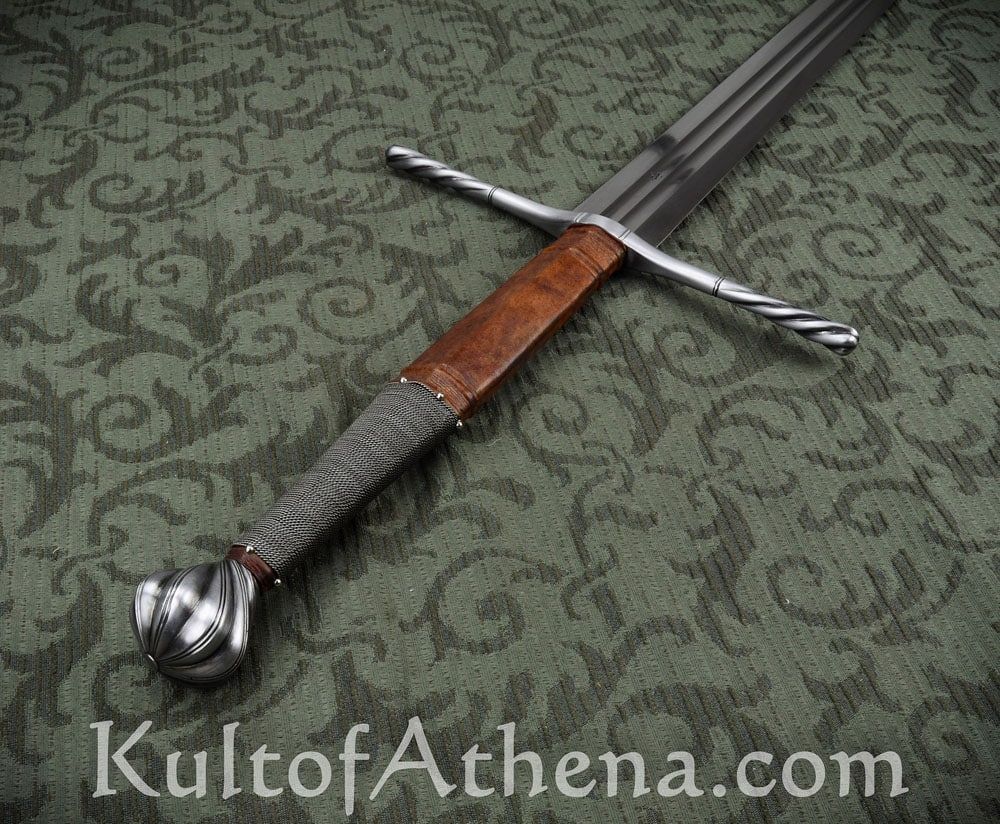The Maximilian sword is inspired by the many examples of smaller zweihander (zweihander mean two-hander) swords carried by the Landesknecht, or German mercenaries of the 15th and 16th centuries. The term Landsknechte was first coined by Peter von Hagenbach, recorder for Charles the Bold of Burgundy, meaning servant of the country (land) and first began appearing in common use in approximately 1470. The appellation was given primarily to the mercenary soldiers from the areas of Alsace, Baden Wurttemburg, and Austrian Tyrol who were trained to fight with pikes, zweihanders and later with the early firearm, the arquebus.
Maximilian I was the German king (1486-1519) and Holy Roman emperor (1493-1519), who established the Hapsburg dynasty as an international European power. Maximilian I is credited with the creation of the Landsknechts.
This new military force was closely modeled on the fierce and well-trained pikeman of the Swiss mercenary companies. The face of war was changing dramatically during this period. The Burgundian Wars (1476-7) had shown that heavy cavalry was virtually useless against well trained pike formations, and the cost of training and equipping mounted troops was becoming too much of a burden on the European nobility. This new mobile infantry of pike formations supplemented by two-handed swordsmen and primitive firearms were more easily trained in large numbers and quickly became the main body of mercenary armies throughout Europe.
The Landsknecht army would have been a fearsome sight to behold — thousands of men wearing what would appear to be brightly colored rags and hats with many gaudy, brightly colored feathers. Their clothes, taken from their fallen opponents and not always fitting properly, was slashed and tied together to fit the new owner — a look that would later become the trendy fashion among the nobility.
These swords was designed for broad, sweeping cutting blows (such as clearing a line of pikes) and then for thrusting by using a half-swording technique (gripping the hilt in one hand and the blade in the other) in close-quarter fighting. Landesknecht are often depicted in period woodcuts as carrying a shorter sword (often a katzbalger) as a sidearm in addition to the zweihander, presumably for use in close-quarter combat.
The Maximilian has a hand ground high carbon steel blade that is tempered for flexibility and edge retention. The crossguard and pommel are cast from mild steel. The grip is stabilized birch wood, fitted over with tight leather.












Reviews
There are no reviews yet.